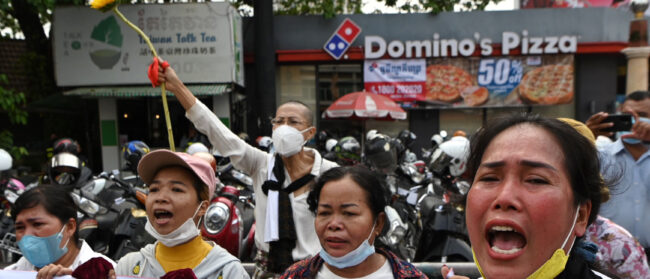Cambodia crocodiles set loose to save their lives
Conservation group releases the largest batch of endangered Siamese crocodiles to reinforce the wild population of predators
By Anton L. Delgado
Water rippled with each step Sim Khmao took deeper into Steung Kampong Tachey, a part of the Sre Ambel River. With his left hand clutching the snout of a crocodile, and his right supporting its tender underbelly, Khmao carefully kept his balance on the mossy riverbed – nervous to drop the softly snarling Siamese crocodile.
When waist deep, Khmao launched the juvenile crocodile into the water. He watched it swim into the wild before turning back to grab another.
“I want people to help protect rare animals, like these crocodiles, in Cambodia,” said Khmao, a community warden leader in charge of patrolling crocodile sanctuaries. “I also want to promote crocodile protection in other countries.”
As part of the largest crocodile release in Cambodia by Fauna & Flora International, Khmao assisted in releasing 25 critically endangered Siamese crocodiles into the Cardamom Mountains in March.
“Releases into the wild are part of the solution,” said Pablo Sinovas, Fauna & Flora flagship species manager. “But releases need to be part of a holistic effort that includes community-supported habitat protection and law enforcement.”
Conservationists are experimenting with technology new to crocodile conservation in Cambodia to track the fate of released crocodiles. The Kingdom is home to the reptile’s largest known wild population in Southeast Asia and Sinovas said modern conservation tactics could help safeguard the region’s remaining wild crocodiles.
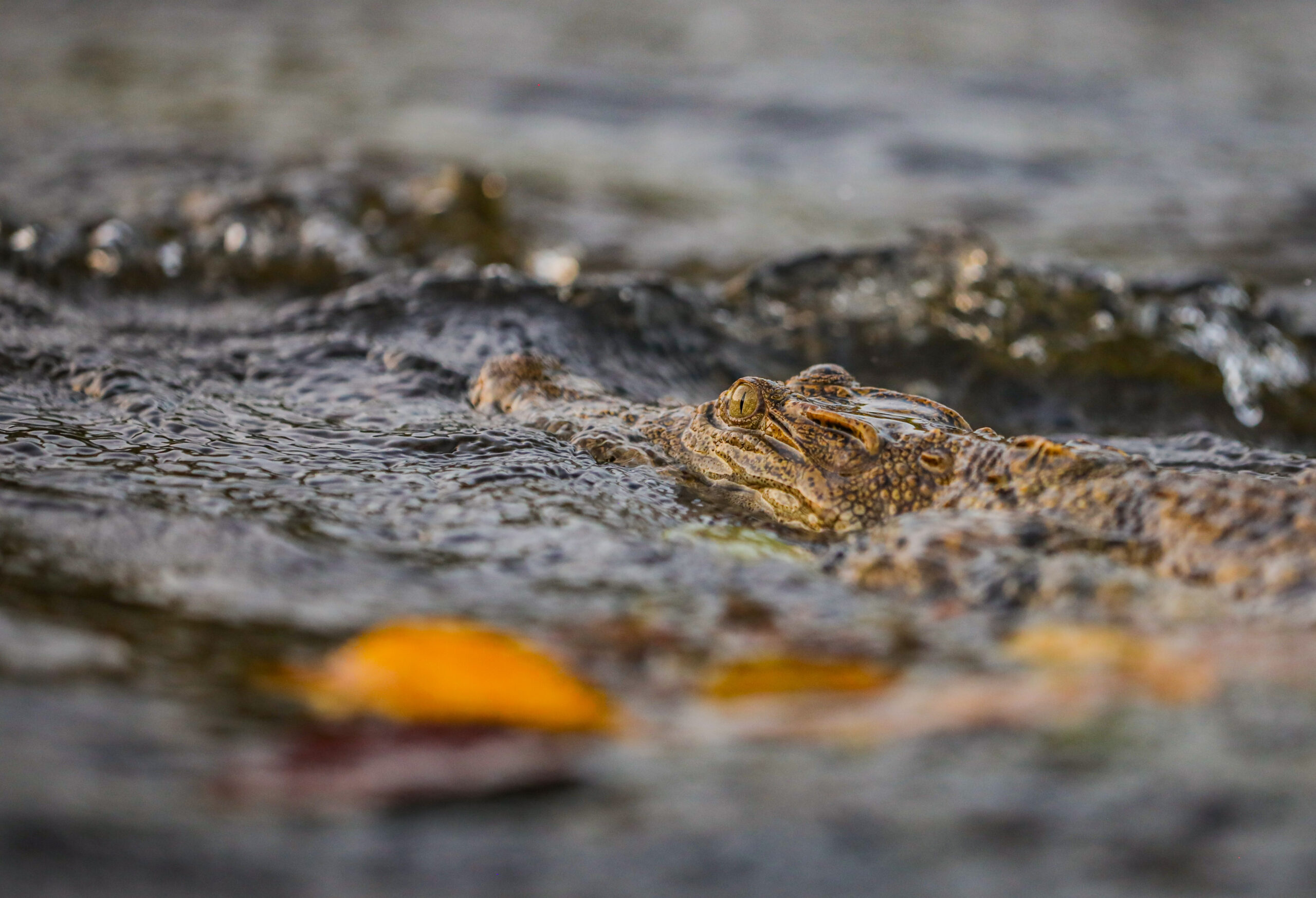
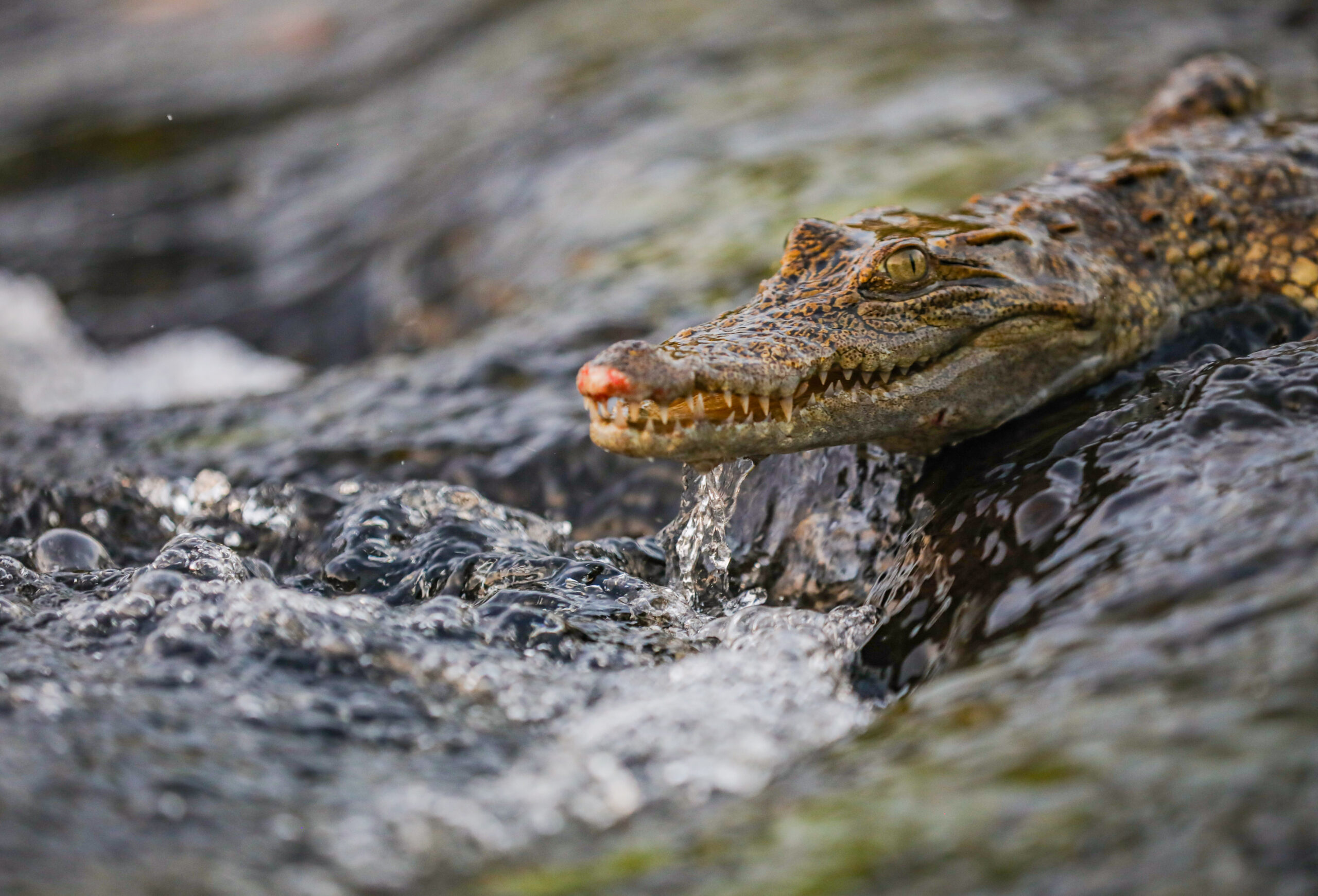
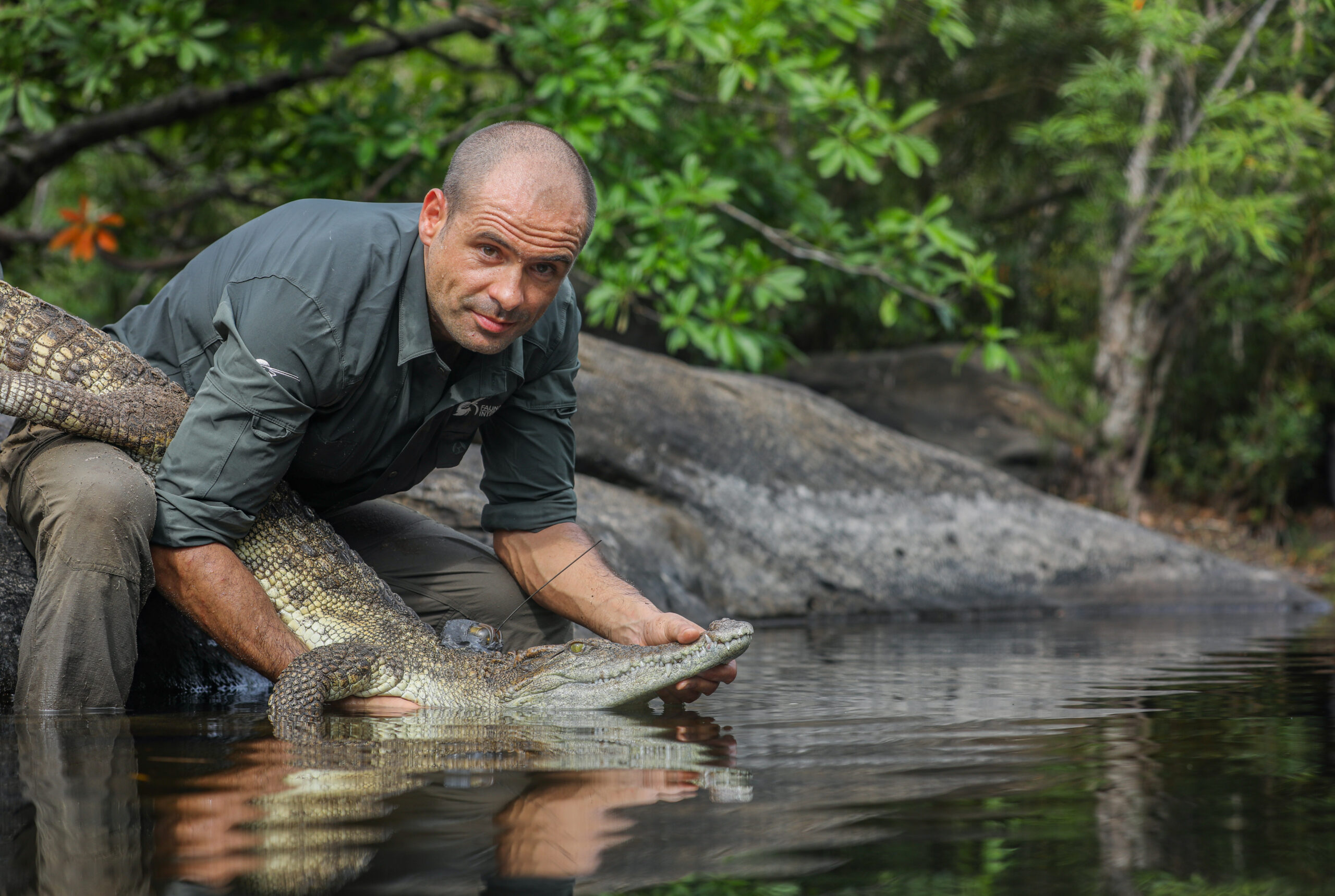
In just over 20 years, Sam Han has gone from re-discovering Siamese crocodiles in Cambodia to releasing more than a hundred into the wild.
Historically abundant in the wetlands of Southeast Asia, Siamese crocodiles were believed to be mostly extinct by the 1990s. The species has been classified as “critically endangered” on the International Union for Conservation of Nature (IUCN) Red List since 1996, with the organisation’s action plans referring to Siamese crocodiles as “one of the world’s most endangered crocodilians.”
In Cambodia, the species was thought to be extinct in the wild until 2000, when a Fauna & Flora survey rediscovered a remnant population in the Cardamom Mountains.
“We were so happy to find the wild crocodiles,” said Han, a project manager for the Cambodian Crocodile Conservation Project who helped conduct the 2000 survey. “The rediscovery made us feel like we had the power to help the species.”

The conservation project was founded after the discovery and has established five crocodile sanctuaries in the Cardamoms. The project works with around 30 community wardens, who safeguard sanctuaries from habitat loss and poaching.
“My role is to protect and patrol crocodiles from offenders who want to threaten them,” Khmao said. “We are tasked to keep them alive for the next generation.”
There have been 11 releases in the sanctuaries with a total of 136 Siamese crocodiles released to reinforce the existing population in the Cardamoms.
While Southeast Asia’s crocodile farming industry contributed to the demise of Siamese crocodiles in the wild, Cambodian farmers have recently been donating crocodiles to Fauna & Flora for release and breeding.
“This is a new relationship that has only been formed in the last couple of years,” said Joe Rose, Fauna & Flora captive breeding officer. “I am not sure what led to this, besides more time being spent talking to farmers and conservationists realising we need farmers if we actually want to make a difference.”
The 25 crocodiles released in March were farmer-donated, Rose confirmed. The reptiles carried technology never before used in Cambodian crocodile conservation.
“After crocodile releases, we need to understand where they go and whether they survive,” Sinovas said. “This better informs our plans for future releases and allows us to adapt if necessary.”
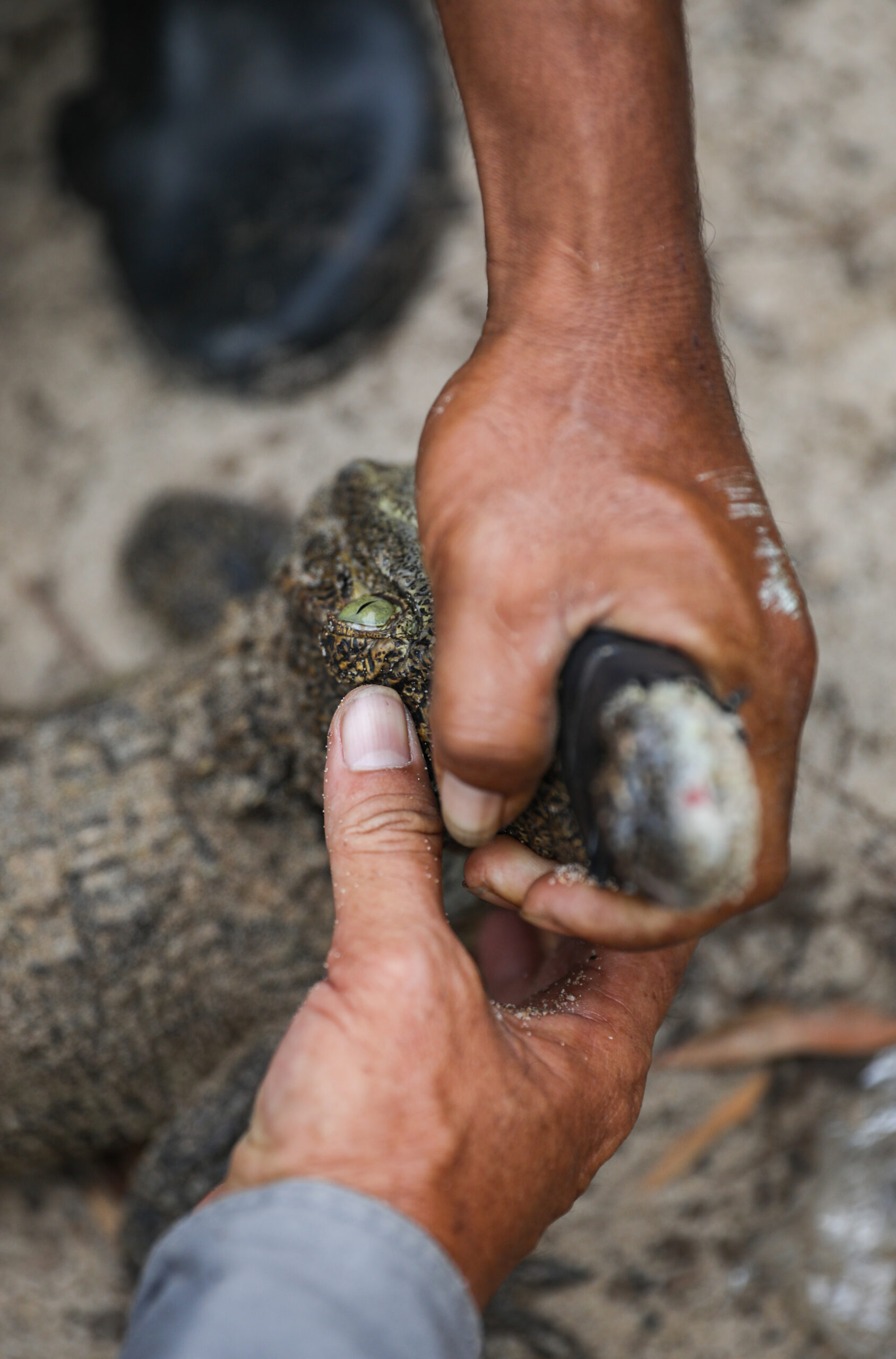
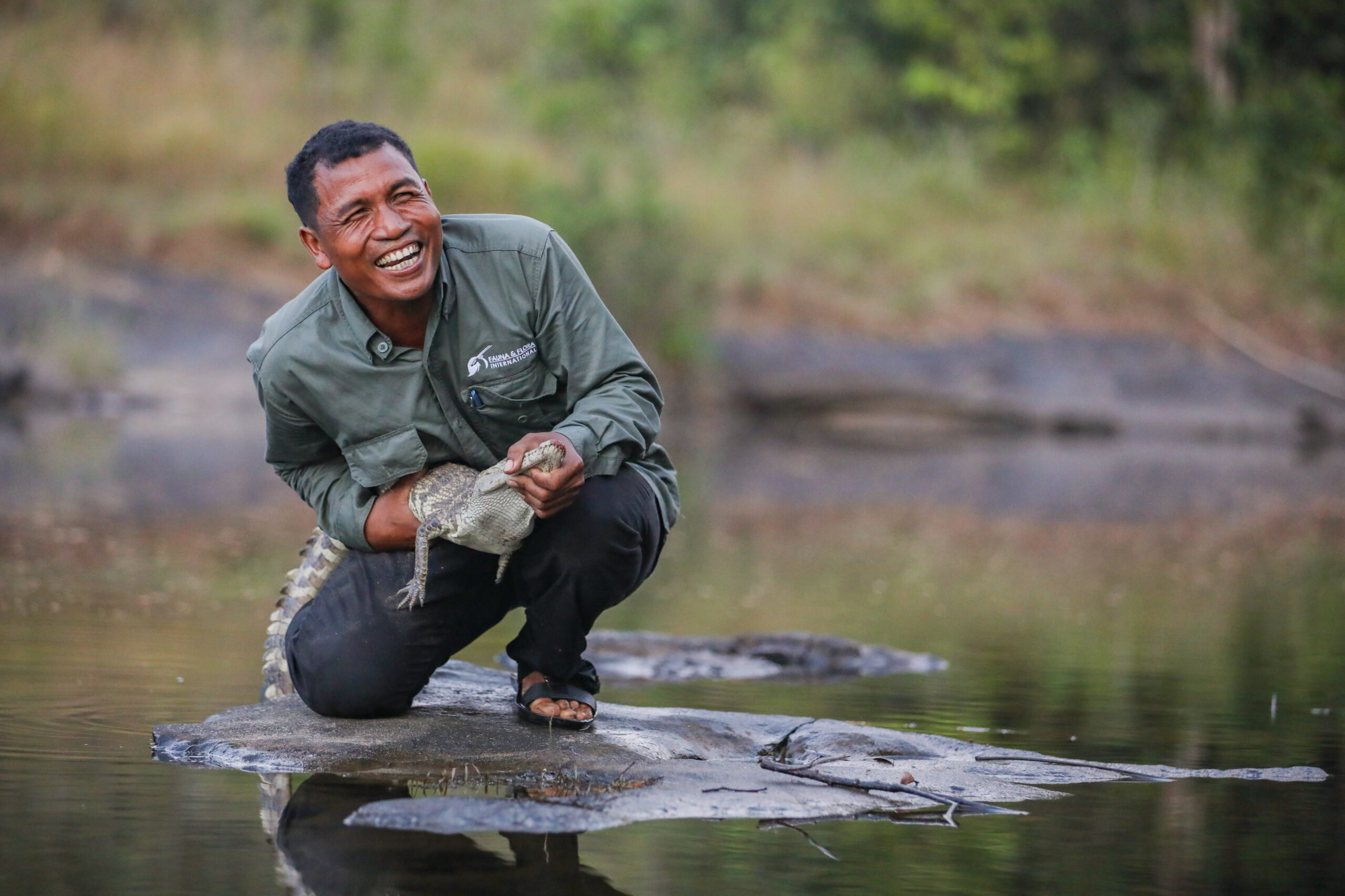
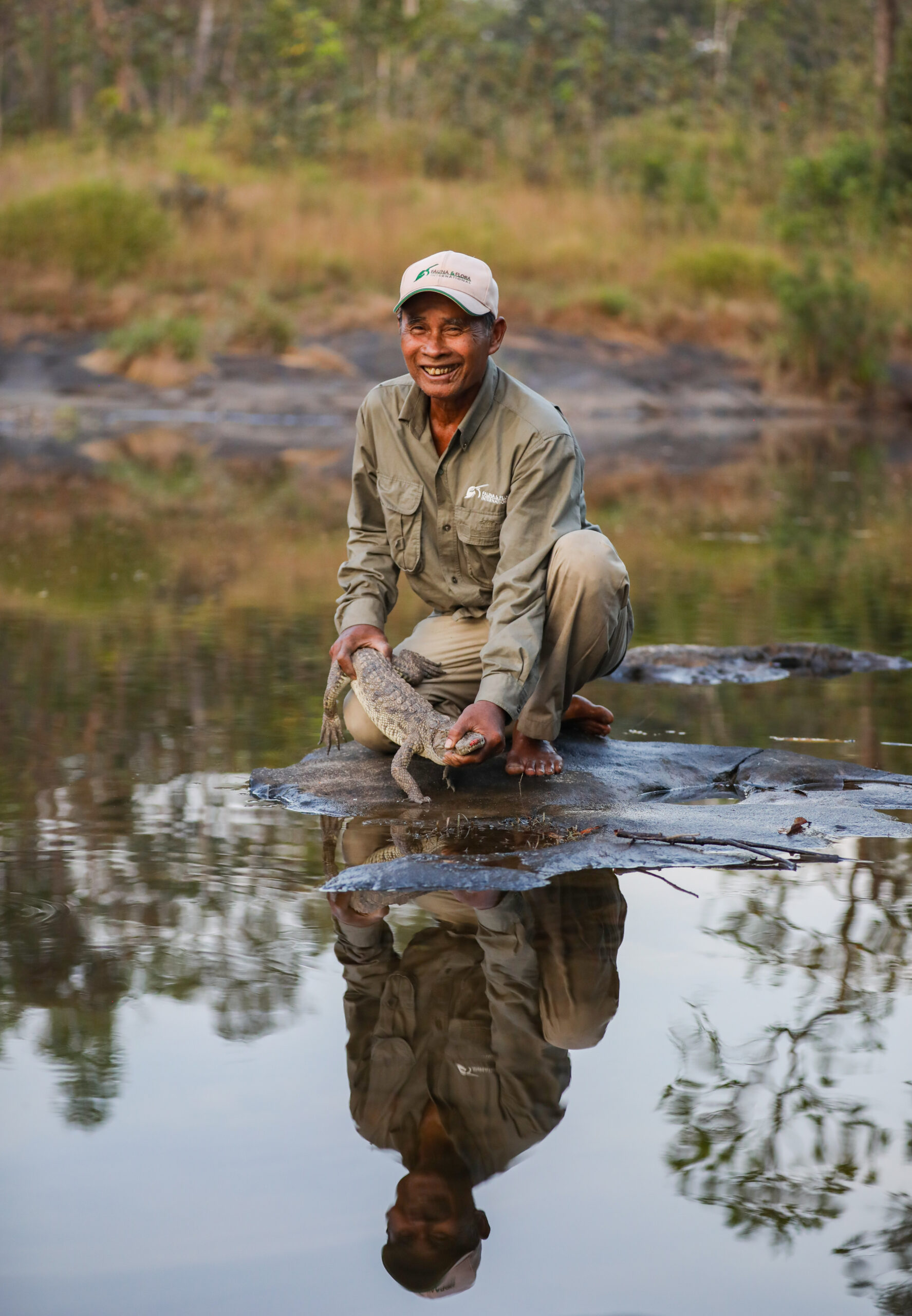
Environmental DNA samples taken from river water will determine if the species detection method can pick up the presence of Siamese crocodiles. According to Sinovas, reptiles are harder to detect because they leave behind less DNA than other vertebrates, like mammals. If eDNA sampling proves effective, the technique would ease surveys of other rivers for wild populations, he said.
Satellite tags were attached to the three largest crocodiles released. This is the first time the technology is being used for Siamese crocodiles and Sinovas hopes the tags can track crocodile movements in the first year after release.
Acoustic telemetry, a process in which transmitters emit soundwaves detected by receivers, is also being tested. Transmitters were implanted into the released crocodiles with eight receivers placed along the river, which Sinovas said should detect the passing animals. During the release, transmitters were tested with an underwater microphone called a hydrophone.
Crocodiles are “top predators” and an essential part of an ecosystem and post-release information will aid conservation efforts. “By reintroducing Siamese crocodiles into their natural habitat, we are to some extent re-establishing that ecological balance,” Sinovas said.
In Indochina, Siamese crocodile reinforcements and reintroductions have taken place in the Xe Champhone Wetlands of Laos, Pang Sida National Park in Thailand and Cat Tien National Park in Vietnam.
“It is important to re-establish multiple populations throughout their historical distribution because just one population in the wild could easily go extinct,” said Steven Platt, a Wildlife Conservation Society herpetologist in Savannakhet, Laos. “Multiple populations act as a buffer against extinction.”
According to Platt, 112 pure-bred Siamese crocodiles were released into Xe Champhone, which he hopes will begin an “ink blot” effect of crocodiles spreading from the wetlands to surrounding areas.
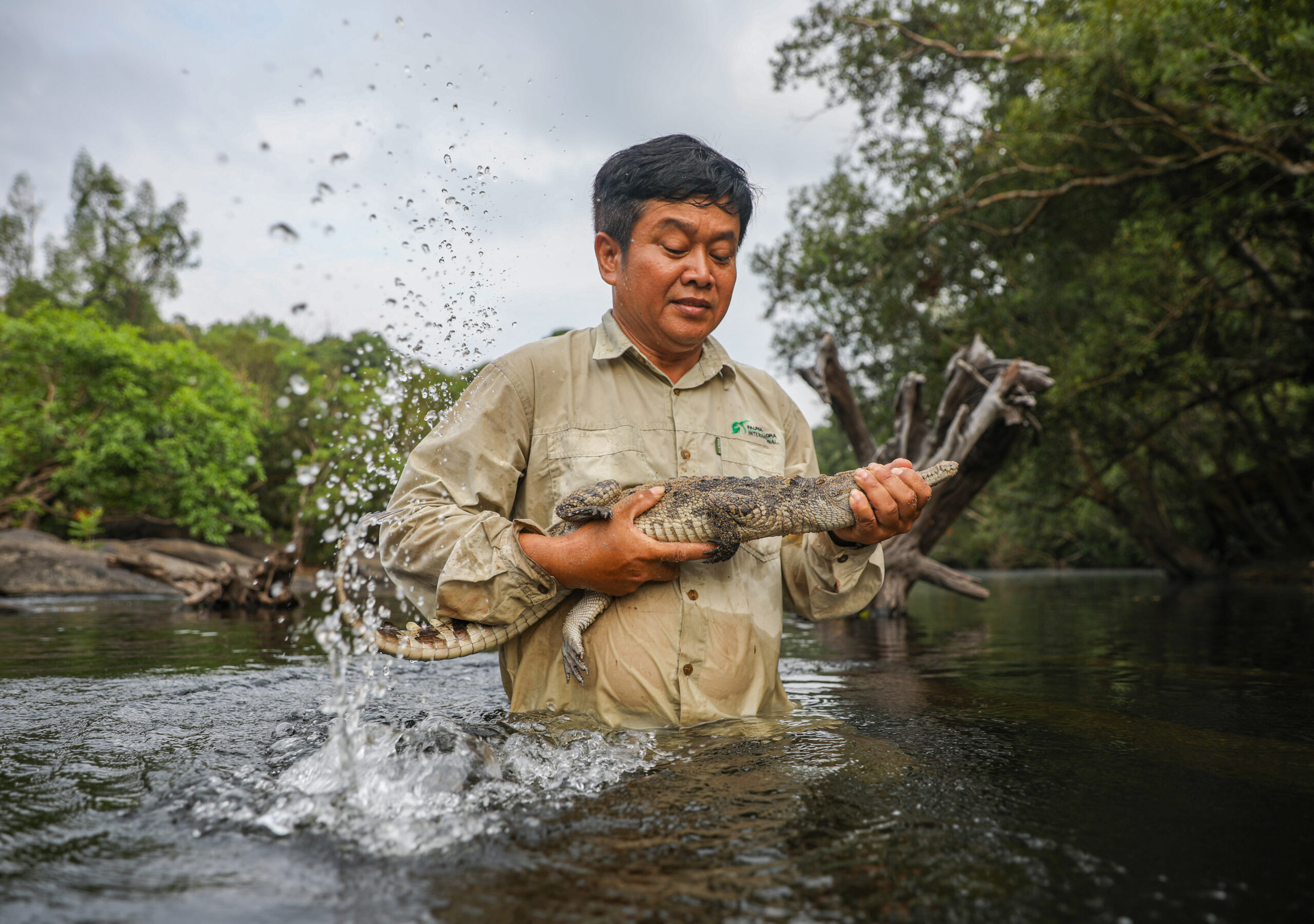
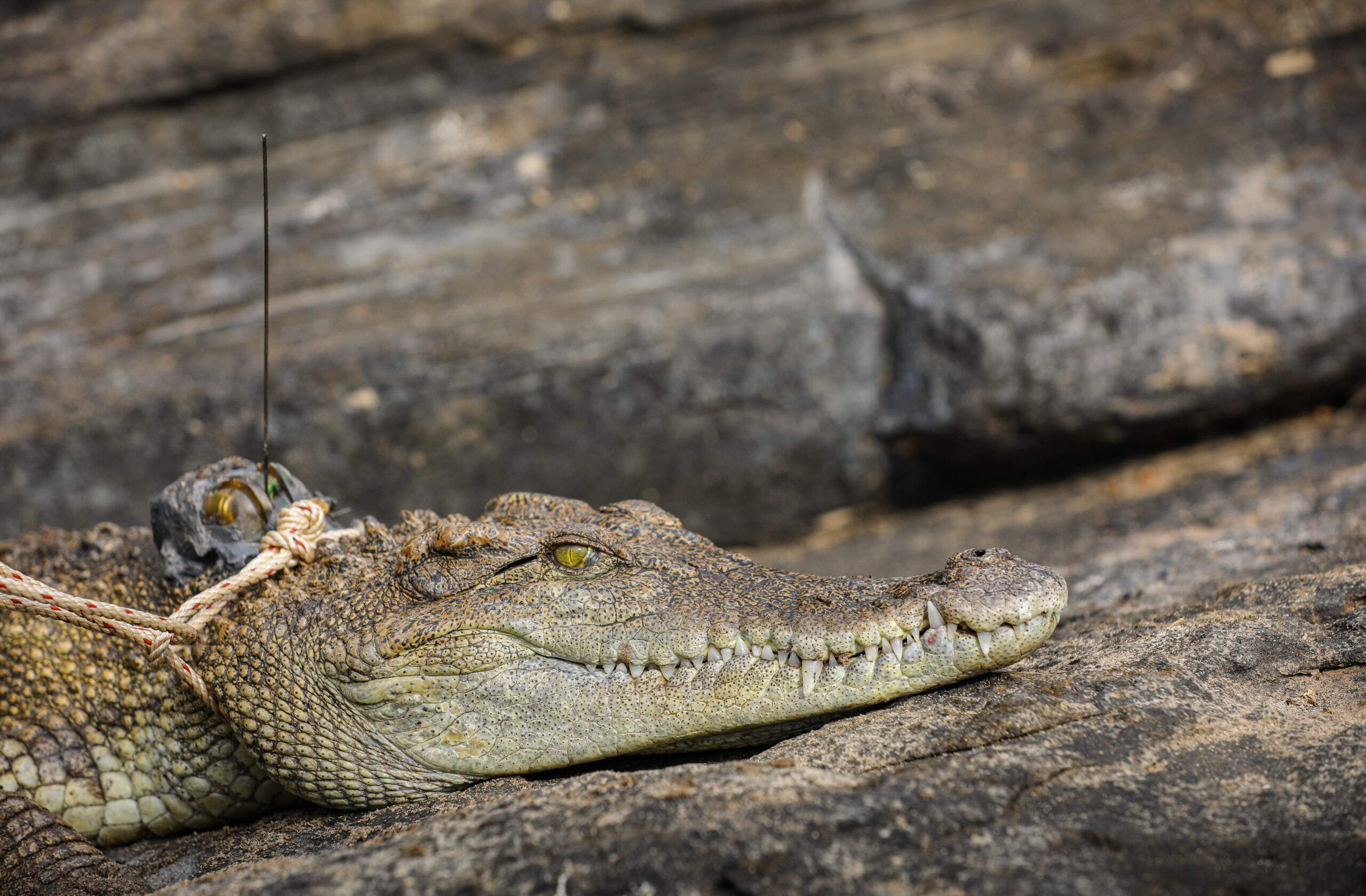
The ultimate “goal of any reintroduction program is to have enough animals out there for a self-sustaining, viable population,” Platt explained.
In Cambodia, the Wildlife Conservation Society runs a ‘head-starting’ program for Siamese crocodiles. Head-starting is a conservation method where crocodiles are taken as eggs from the wild, reared in captivity until a certain size and then released.
“These reptiles are very vulnerable immediately after they hatch,” said Sitha Som, a landscape project manager for the conservation society. “We want to give the hatchling a better chance of survival, by letting them grow to a bigger size.”
Crocodiles are generally considered for release 18 months after hatching when they typically reach 80 to 90 centimetres (approximately 31 to 35 inches), said Som, who described the conservation society’s tentative plans to release 10 crocodiles later this year in wetlands by Sre Ambel River.
“The first step is getting crocodiles back on the landscape,” Platt said. “It is extremely important to get them back out there because when we put them back or take them out, we see positive and negative ‘cascading effects’ ripple through the ecosystem.”
In 2012, Cambodia’s Ministry of Agriculture, Forestry and Fisheries signed a 20-year Siamese crocodile conservation action plan, in partnership with Fauna & Flora and the Wildlife Conservation Society.
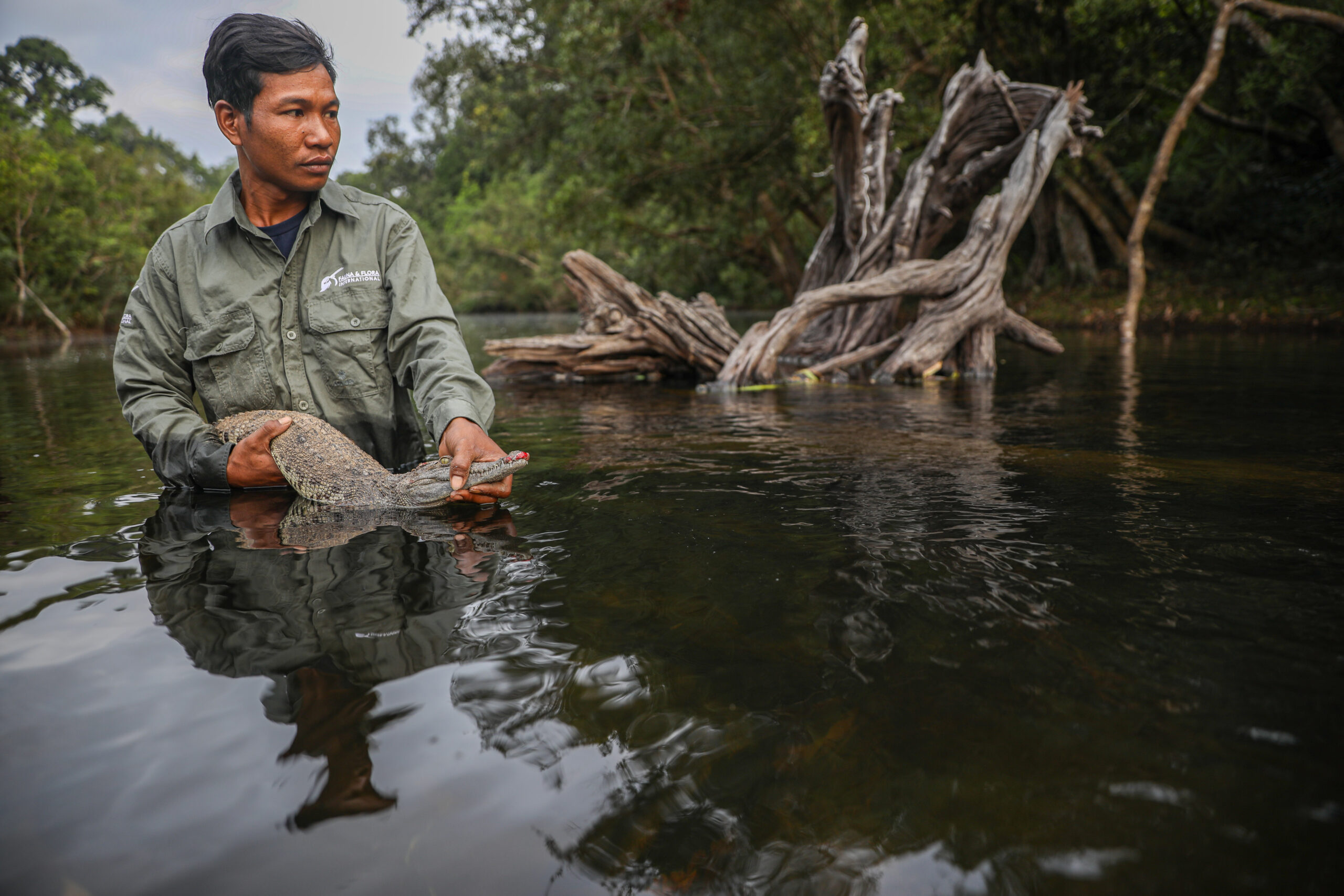
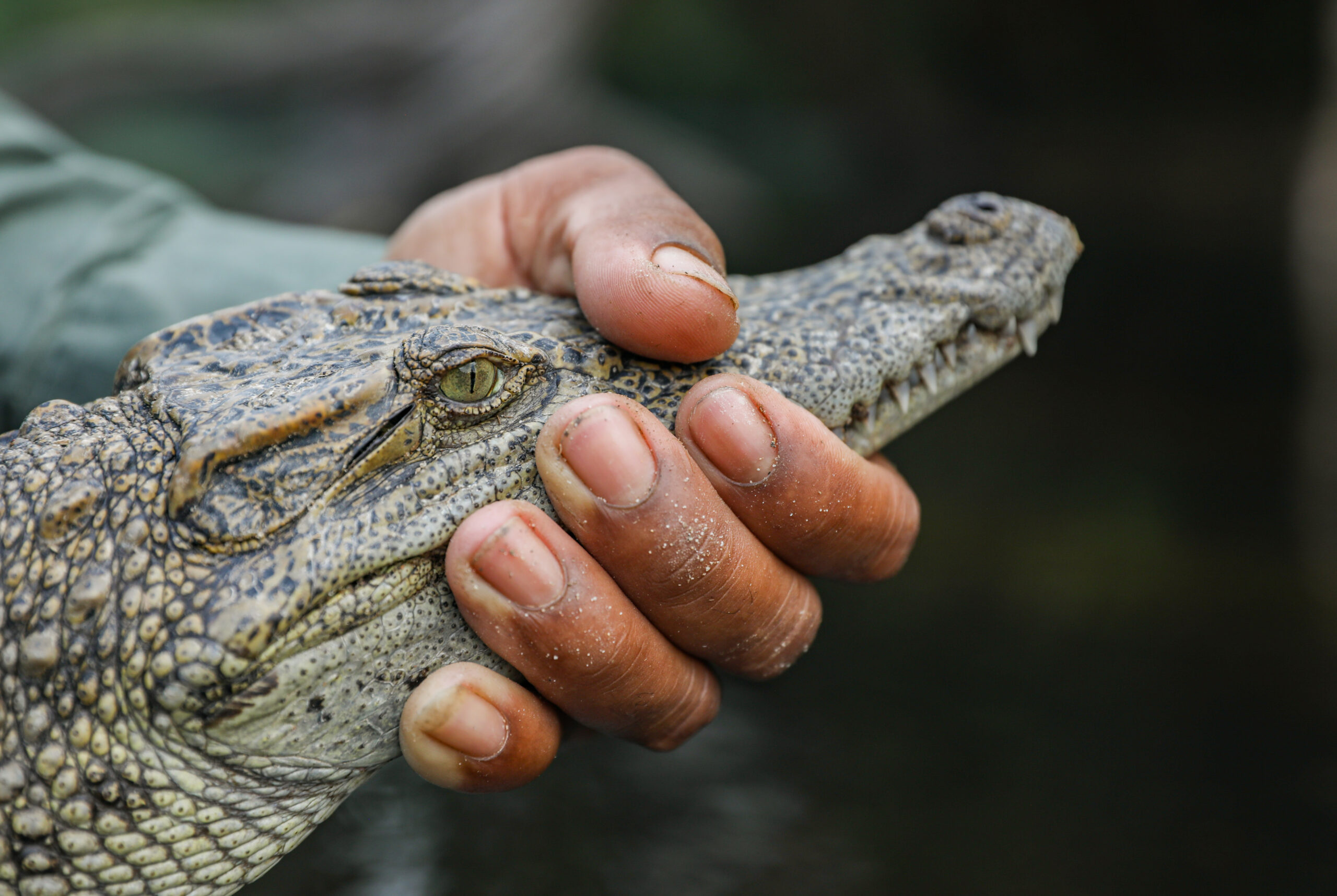
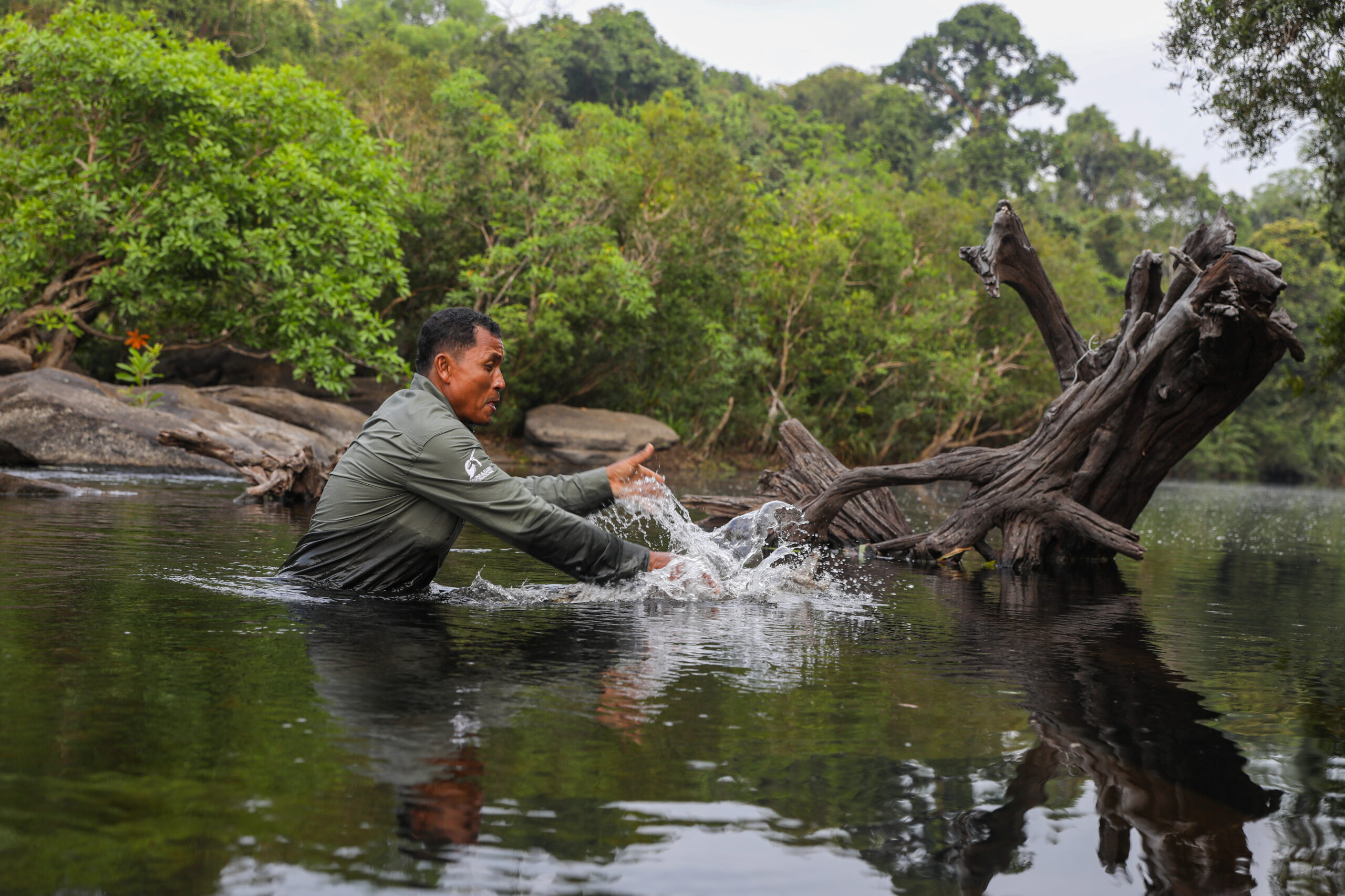
One of the main goals is to establish a wild population of at least 10,000 Siamese crocodiles across Cambodia, according to a Fauna & Flora translation of the Khmer-language action plan.
“We are getting there but this is a long-term process. The species reproduces relatively slowly. A generation is eight years or so. If crocodiles are reproducing in the wild, a few generations would be needed to reach that goal and that would take a few decades,” Sinovas said, later confirming Fauna & Flora’s plans to conduct its first release of crocodiles outside the Cardamoms later this year.
After the last crocodile was set free into wild waters, the Cardamom Mountains seemed to skip sunset with an evening storm quickly replacing the stagnant afternoon heat. As dark skies teased at the potential of rain, Sinovas set off down Steung Kampong Tachey in search of the species.
Just down the river, the beam from Sinovas’ headlamp reflected off several gleaming red eyes. Paddling toward the riverbank, he spotted a pair of crocodiles lurking just under the surface of the water.
“One of the rarest sights in Cambodia,” he said. “Siamese crocodiles in the wild.”
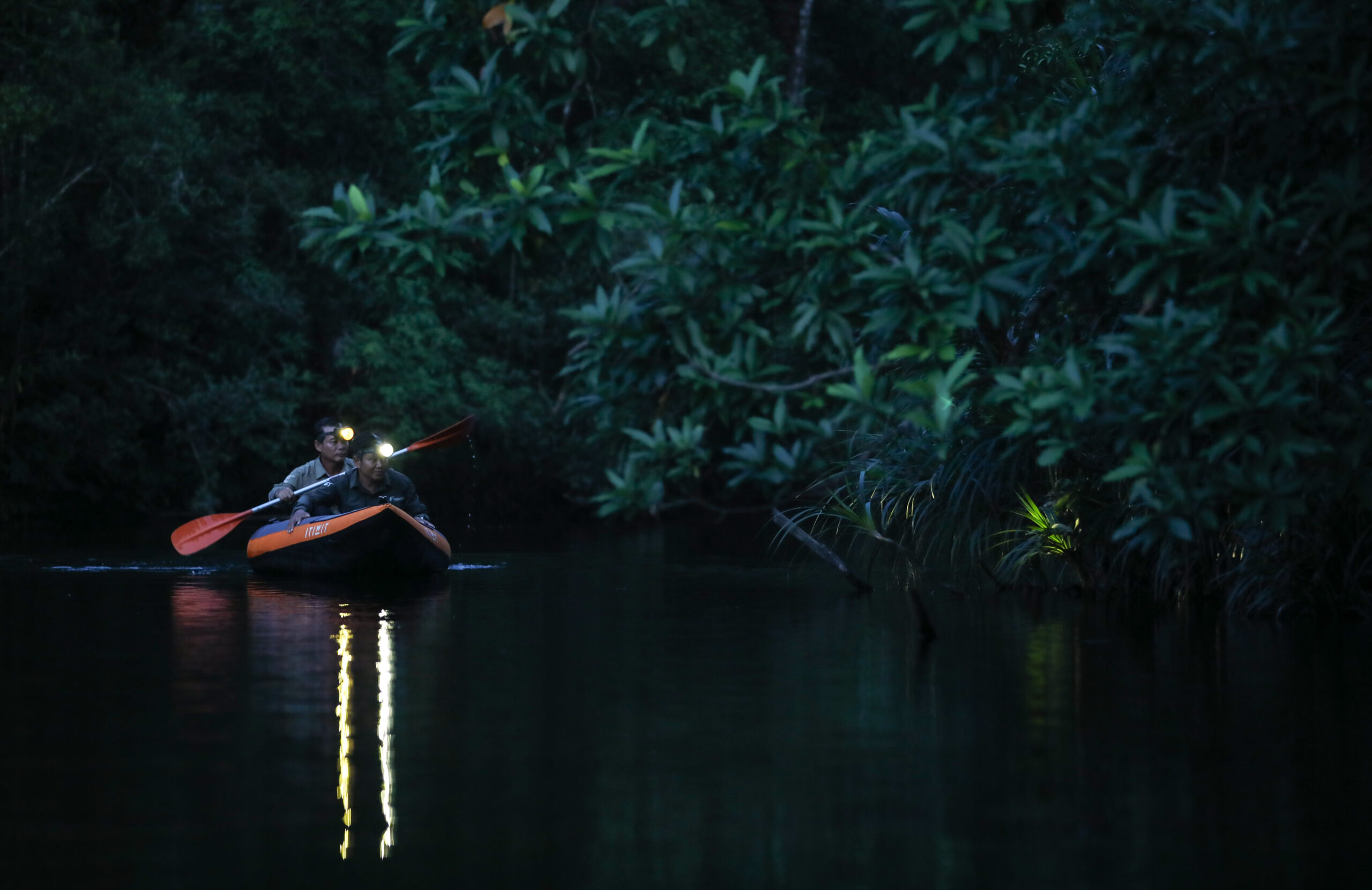
Photos by Anton L. Delgado for Southeast Asia Globe


